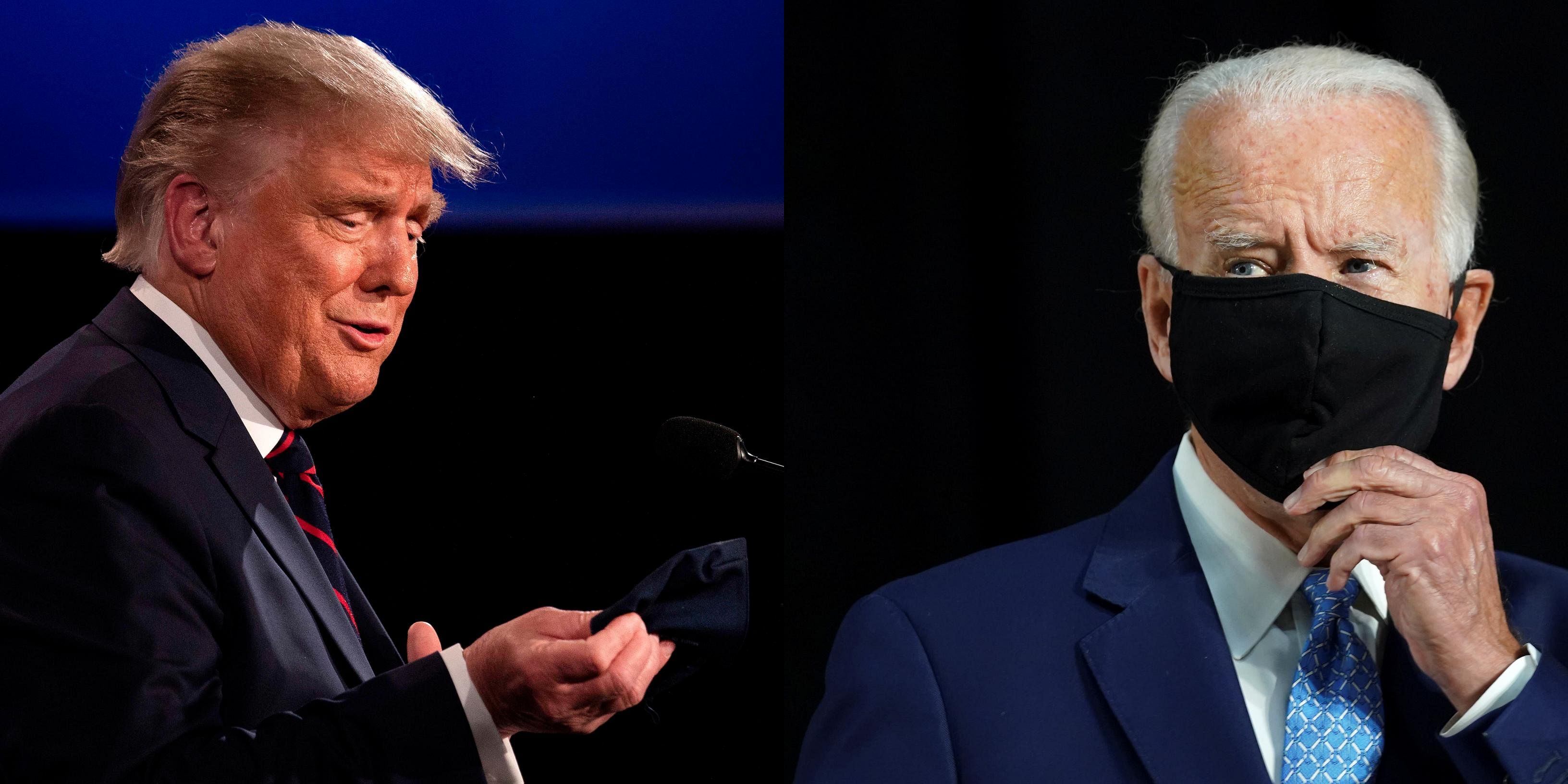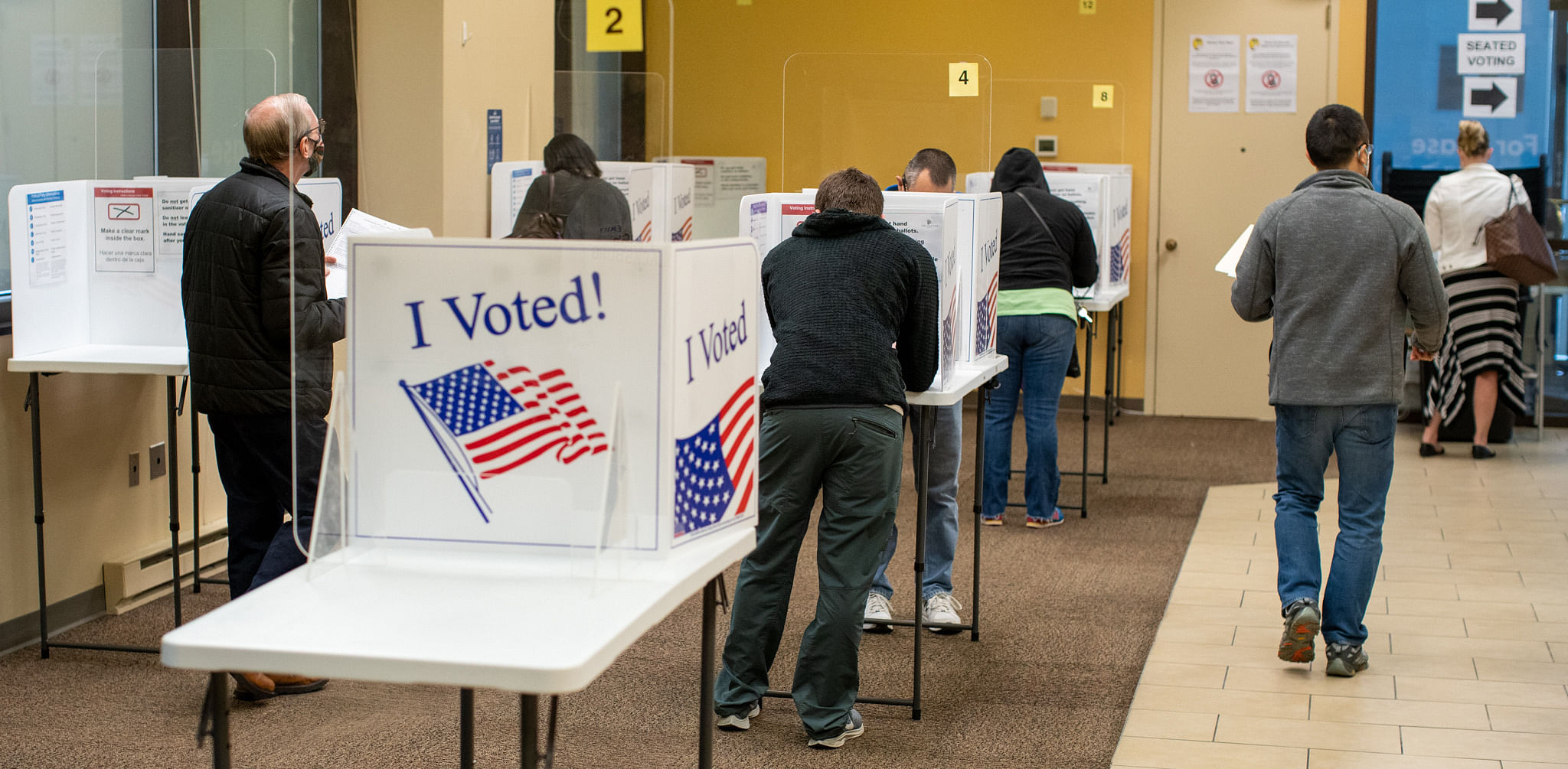

All that Mark J Rozell did on the nights of the past United States presidential elections was to switch on his TV and watch the results coming in state-by-state. “And, at some point late night, the (TV) networks would declare a winner, somebody who would get 270 or above in the Electoral College,” says Rozell, the dean of the Schar School of Policy and Government of George Mason University in Virginia.
Not only Rozell, most of the US citizens knew well before the morning after the election day who would get to live in the White House for the next four years.
But it may not go that way this year, thanks to the SARS-CoV-2.
The virus has now got President Donald Trump, who is seeking a second term in the White House. The shadow it has cast on the 2020 US presidential elections is much longer though.
As the Covid-19 wreaked havoc across the US, most of the 50 states of the country expanded access to mail-in voting and early voting options in order to avoid overcrowding and lessen waiting time for voters in the polling stations – thus to lower chances of spreading the disease.
“Because of the pandemic, we are having much more voting by mail this year and also early voting so that voting in person can be staggered over time, so we minimize the risk to people,” Rozell, an eminent expert on governance and public policy, says during an online briefing on the presidential elections organized by the US State Department for foreign journalists.
Twenty-eight US states already started early in-person voting in the polling stations and 18 more are likely to do so in the coming weeks. Nine states, like California, Utah and Orgon, as well as the District of Columbia are conducting the polls primarily by mail-in voting by sending out postal ballots automatically to the registered voters. As many as 36 states, including Pennsylvania, Missouri and Arkansas, are allowing all voters to request ballots to cast votes by mails, without requiring them to cite reasons. Five other states – Indiana, Louisiana, Mississippi, Tennessee and Texas – will require voters to cite an acceptable reason to opt for mail-in voting.
The deadline for the voters to mail in the ballots varies from state to state. The postal ballots in the 26 of the 50 states will be counted only if they reach before or on the day of the election. But the 24 other states, which account for 65% or 349 of the total 538 Electoral College votes, will count all ballots postmarked before or on November 3, no matter if they reach later. In the State of Washington, for example, the postal ballots postmarked before or on the Election Day, will be counted if they reach by November 21.
That is why it is likely that neither Trump nor his rival, Democratic Party’s candidate Joe Biden, may emerge as a clear winner on the election night.
The TV channels will of course air results based on counting of the votes cast in person in the polling stations. “But counting of the mail ballots will take a few, perhaps several days, perhaps even longer. I am not sure. We have not done this before,” says Rozell. “Therefore, we will not know most likely the result of the election on election night itself as had always been the case. We will have to wait for the mail-in votes to be counted.”
Trump, however, repeatedly questioned the integrity of the mail-in voting system. He said that the 2020 presidential polls would be the most “inaccurate” and “fraudulent” elections in the history of the US. He even moved to block $ 25 billion emergency funding to the US Postal Service, stating that it would boost mail-in voting and help his rival.
Biden alleged that Trump was trying to “undermine” the elections with “false claims” of fraud.
The former Vice President has been blaming the US President for downplaying the Covid-19 outbreak. He has also been criticising the Trump Administration for its inadequate response to the pandemic, which so far infected over 7.2 million people and killed over 200,000 in the US. Trump, however, claims that his administration saved thousands of lives by enforcing nationwide shutdown early. But the Republican Party’s candidate has been holding large rallies brushing aside the advice of the experts to maintain social distancing. He has also been playing down the need to wear masks. He even ridiculed his rival for always wearing masks always during the first debate at Cleveland, Ohio on September 30. As Trump, himself, and his wife, Melania Trump, were tested positive for the SARS-CoV-2 just two days later, Biden called it a “bracing reminder” for the US citizens to take the Covid-19 seriously, adhere to the advice of the scientists, use masks and maintain social distancing to stop the spread of the virus and save lives.
“Conservatives are angry about having to wear a mask. Liberals are saying, ‘Don't you care about the collective state of society?’” says Jeffrey M Stonecash, the Distinguished Professor Emeritus of Political Science at the Maxwell School of Citizenship and Public Affairs in Syracuse University.
The debate over masks is likely to have a reflection in the changing trends of the results on the election night. Rozell points out that Biden’s supporters, according to polling data, tend to be much more likely than Trump’s “to wear masks, to vote by mail and to not want to take any risk with the pandemic”. The supporters of Trump are more likely to vote on election day and less likely to wear masks in public. “It's strange that we're talking about the pandemic as having a political impact, but it is possible that the election results as they're coming in on election night will show Trump winning and winning and winning all over the place, but that's based on more of his voters showing up to vote in person,” he says and adds: “Then as the results come in from the mailed in ballots, Trump’s margin is going to narrow, narrow, and perhaps be overtaken by Biden after several days.”
